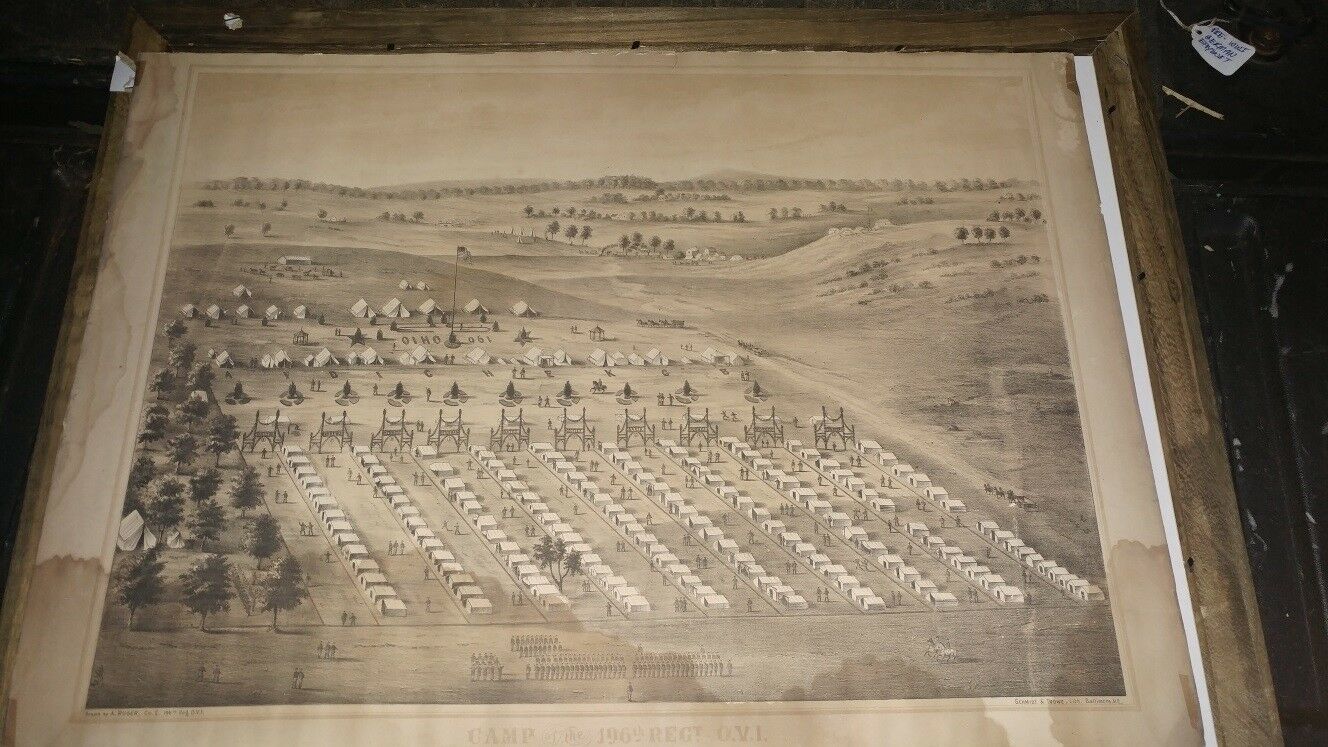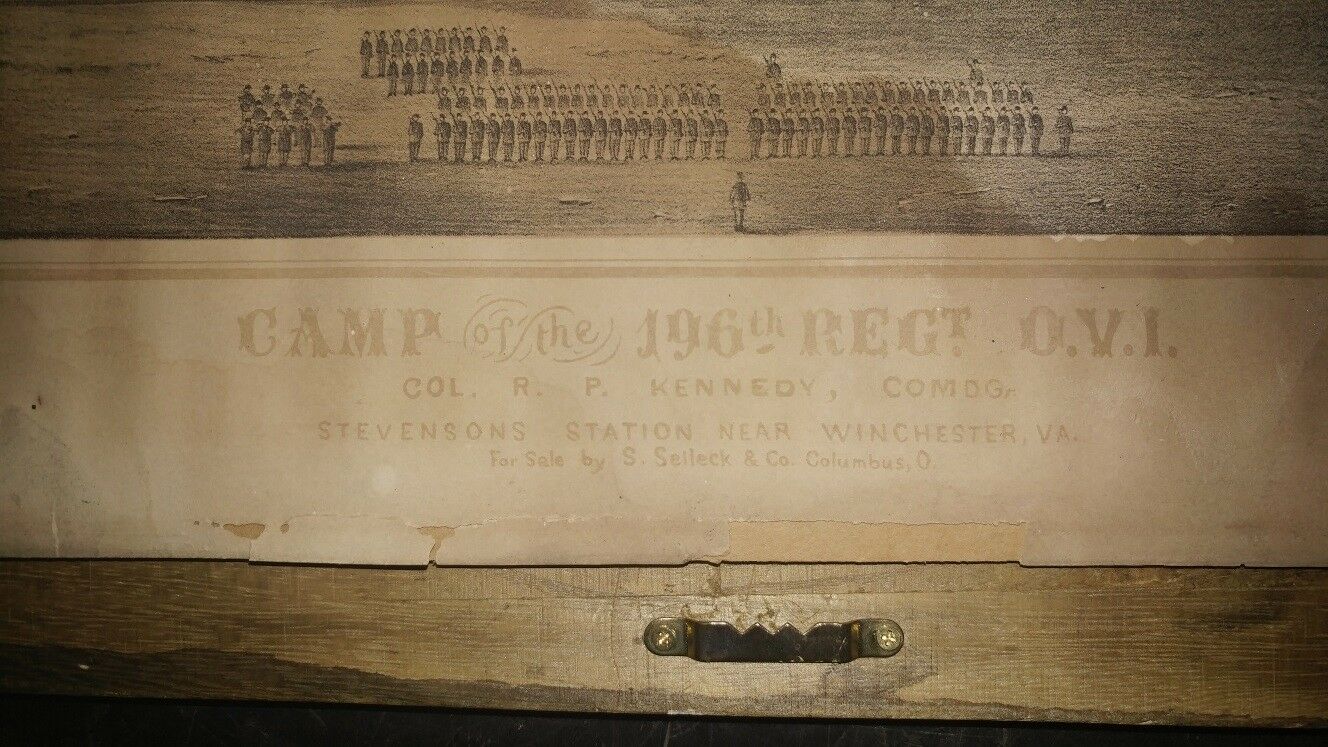-40%
Civil war Camp of the 196th OVI Albert Ruger Lithograph birds eye view
$ 356.4
- Description
- Size Guide
Description
Very rare original lithograph of Civil war Camp of the 196th regt O.V.I by Albert Ruger 24x18This is not a copy of the one that is available in the Library of Congress. You will notice that it does not have the fold mark in the center like that one does.
On the back somebody has wrote "1 of 10 known" but I have no way to verify that. I can only find reference to the one that is in the Library of Congress.
Library of Congress Control Number
73694531
STEPHENSON'S DEPOT:
The Depot was a little red brick building just north of Winchester, Va. and was also referred to as Stephenson"s Station, and was the site of many Union encampments.
The 196th arrived there about April 27th, where Brigadier Gen Stevenson ordered them to report to Gen. Brooke.
The Regiment began to settle in for garrison duty, by setting up camp.
They began by pitching their tents in even rows by company battle order, not in perspective alphabetical order as one might perceive.
Typically the captains tents were set up at the beginning of each row.
The soldiers tents were packed, housing up to five or six men.
While in camp, the men would spend each monotonous day rising to reveille at about sunrise, just one of about a dozen camp calls.
After roll call was taken, they would get cleaned up and eat breakfast with their mess mates, usually about four of them, followed by sick call, "also known as Surgeon's Call", then they would clean camp, each company would be in charge of keeping their own street clean and organized.
When done, the first sergeant would assign “Picket Duty” to the men, this was called “Guard Mounting”, no Privates were excluded from this.
Picket duty was for the protection of the regiment or brigade, this was done by posting sentinels in three lines around the camp.
The first, referred to as the “Advance Picket” was placed one to two miles from camp for about two hours each time out, and usually for one or two days at a time keeping watch for anything unusual.
The second line was referred to as the “Second Guard” and were closer to camp.
The third was referred to as the “Rear Guard” and were assigned to the perimeter of the camp, they couldn’t take orders from anyone except those officers who were in the guard party.
After the duties were assigned, it was time for drill; learning how to be a soldier.
The men would target practice, learn how to load and clean their muskets, and what actions to take after each order was given, this drill usually lasted till lunch time, after they ate lunch, they were allowed some free time followed by more drill which lasted until late afternoon, at which time the men were dismissed until the next morning at reveille.
A typical Union ration was a pound of beef, sometimes rancid, or salt pork, a little bit of bread, commonly ¾ of a pound of hardtack or cornmeal.
Hardtack was a large soda cracker about three inches in diameter and hard as a rock, the only way to eat these was to soak them in water or fry them in grease, most of the cooking was done over an outside fire.
The men were left to battle the boredom of camp life.
They did this by playing games, such as cards, baseball, dominoes, checkers, etc.
They would wash their clothes, tell stories of war and life back home, or they would read or in most cases be read to, unless your Albert Ruger of Co. E, he spent his time sketching an over view of Camp Chase and The Camp of the 196th at Stephenson’s Depot.
Men spent more time writing letters to family and friends, and hoping to receive them than any other leisure activity, some of the men would venture into Winchester to indulge themselves any way they could by drinking and gambling etc.















